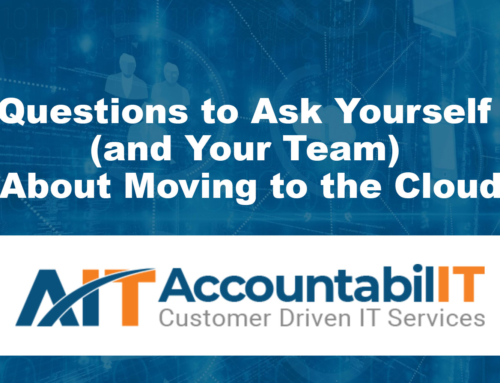If you are an IT decision maker, you may be one of the many fast-tracking your digital transformation efforts. The technology needs of your business have likely changed, thanks to the COVID-19 pandemic. Or you may be driven to transformation by something else entirely, such as competition, rapid growth, or stagnant legacy systems.
Whatever it is pushing you to transform now, you’re probably already familiar with the “what” and “why.” You may have even been brought to your role specifically to disrupt the digital status quo, with an end goal to produce better business outcomes. If so, you’re not just looking to implement new technologies. You’re charged with a full-scale overhaul of the organization’s very philosophy of and approach to technology.
This brings us to the “how”: How can you develop a digital transformation strategy in the rapidly changing technology landscape, with a focus on both the needs of today and the future?
As digital transformation consulting professionals, we’ve uncovered two important truths that every IT leader must know before setting their transformation strategy.
Truth #1: Digital transformation should not be about technology
Well, not just about technology. To be successful, digital transformation requires an understanding of the people that technology will serve: both customers and employees. Here’s how to ensure that the technology you select as part of your transformation serves the people.
Take a cross-functional approach
A siloed approach will kill your efforts at transformation. Before you even begin charting your transformation strategy, create a cross-functional team that includes representatives from various departments: the C-suite, human resources, marketing, product development, sales, customer support, and so on. This will ensure that the needs and objectives of all are met. Keep cross-functional feedback front and center as you go through the process of identifying technologies, and onward through piloting, testing, and business-wide implementation.
Consider the customer
Keep your customer or the end user of your products and services top of mind. Ideally, your transformation will be all but invisible to the customer experience it ultimately provides. Your customer won’t be able to detect that your business has undergone a digital renovation, but they will enjoy buying from you more because the underlying technology better meets their needs.
Don’t forget company culture
This recommendation goes along with the former two in that it’s people-focused, but it’s true that culture can be somewhat more intangible. However, it’s important to make culture part of the discussion, because it will impact the efficacy of any technology tool. The shiniest technology will only make a difference if the people within the organization can and will use it. Make sure your expectations fit within the existing culture of digital technology adoption and use. Anticipate hangups people might have, and have a plan for training digital literacy.
Truth #2: Digital transformation should be big
Transformation is just that: a massive, all-in approach to how technology is used within and supports the organization. While a business-wide overhaul will be made up of small steps, it’s the digital transformation strategies that are large in scope that drive maximum value and impact.
Remember the big picture: the business
If a particular technology strategy doesn’t serve the business strategy or is happening independent of what’s going on elsewhere in the organization, then that technology strategy is doomed. Avoid any disconnects between IT and the business by mapping your digital transformation objectives directly to the business objectives, and tie it all together using key performance indicators (KPIs).
Get the necessary budget
Digital transformation is certainly a time to get smarter about technology costs, but it’s probably not the time to cut costs as a way to improve the business’ bottom line. If you’re on the hook for showing results, but you don’t have the budget to transform at scale, you won’t have the same power to effect sweeping change.
Pull in necessary talent
Whether it’s hiring new engineers of every specialty along with data scientists and UX designers in-house, or working with a digital transformation consultancy or other IT firm that offers these kinds of professional services, make sure you are inviting all the right skills to the table.
Take the risk
Digital transformation is inherently risky, and that can mean a big payoff in terms of efficacy and impact to the business. Build in an agile approach across your strategy, and encourage everyone to make decisions and take necessary risks, even if failure is a possibility. “Fail fast and learn,” as a part of digital transformation can help you make big leaps in effecting digital change across the organization.
What’s next?
Are you ready to tackle the complex process of digital transformation? We can help you identify the right technology, engage your employees, and evolve your digital approach. Contact us at AccountabilIT today to get started.




